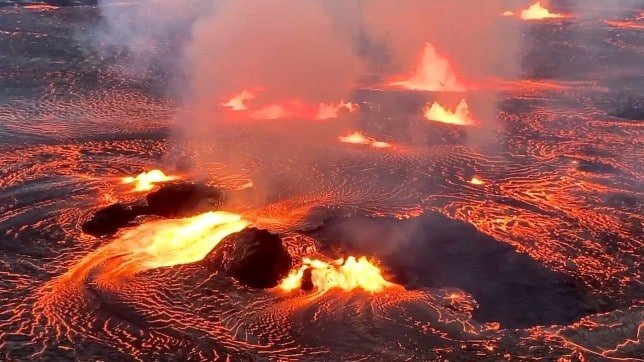The Klauea volcano in Hawaii is currently erupting. One of the many craters along its range, Halemaumau, is currently filled with red-hot lava.
Although inhabitants are not likely to be in the path of the lava, they have been advised to watch out for another danger that volcanoes can produce: Pele’s hair.
No, it’s named after the Hawaiian goddess of fire and volcanoes, Pele, not the football player. It’s also not really hair.
The curious phenomena occurs when molten lava is spat out of a volcano at high speeds and stretches apart as it cools, forming golden, hair-like strands of volcanic glass.
When the lava is not travelling as fast it can form Pele’s tears, small droplets of the same volcanic glass.
‘Pele’s hair are very thin strands of volcanic glass, usually formed in lava fountains by bursting gas bubbles,’ said Dr Brendan Mccormick Kilbride, volcanologist at the University of Manchester.
‘Tiny liquid blobs of lava get stretched out into very thin filaments of glass. These are potentially hazardous because they are very sharp – they can cause harm if you try to pick them up.
The lowdown: what is Pele’s hair?
Thin strands of golden hair-like volcanic glass formed when lava hits the air at speed, stretching out up to two feet long as it cools
‘There are cases from eruptions in Hawai’i where glass shards contaminate drinking water supplies. Since they are so light they can also be transported long distances by the wind, which increases the area of potential impact and introduces new dangers like contact of glass with people’s eyes or the glass being inhaled.’
The United States Geological Service has warned residents to minimise their exposure to Pele’s hair.
It also raised the prospect of vog for those downwind of the volcano – also known as volcanic smog – as well as crater wall instability, ground cracking and rockfalls.
The entire area has been closed to the public since 2007.

